Hermiston in the 1940s
1 of 33

At the height of construction, there were more than 7,000 men and woman working in various capacities at the Umatilla Army Depot. (Photo: Library of Congress)

Construction workers build one of the igloos at the Umatilla Army Depot. In all, there were a total of 1,001 igloos built at the depot base. (Photo: Library of Congress)

The U.S. Army Corps of Engineers began planning the construction of the Umatilla Ordnance Depot, as it was first known, in the summer of 1940. (Photo: Library of Congress)
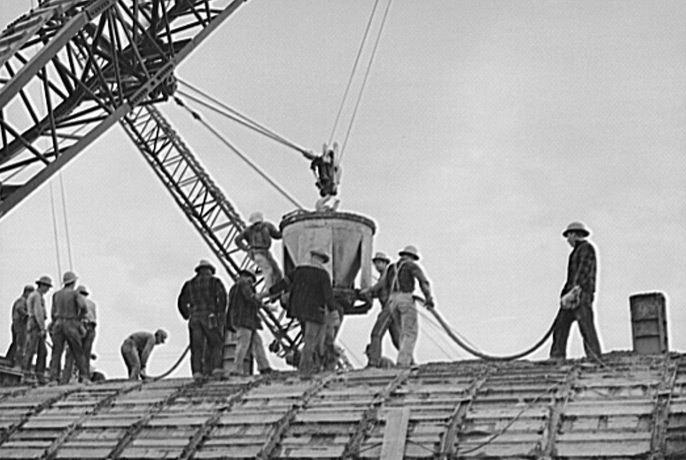
Workers pour concrete into one of the igloos being built at the depot. Work on the depot begin in 1940 and wrapped up one year later. (Photo: Library of Congress)
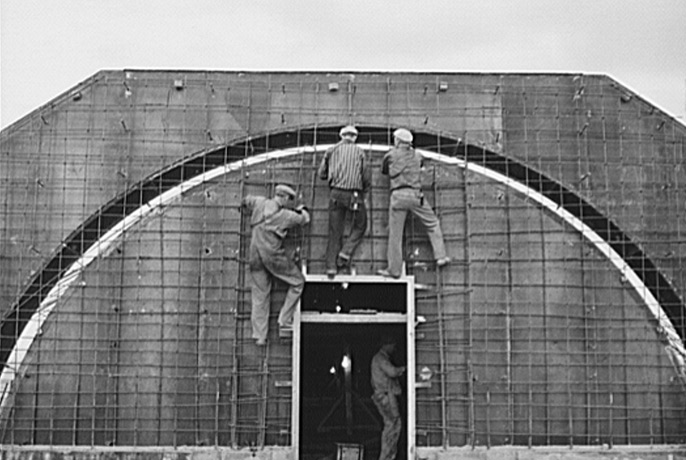
Hermiston was chosen as the depot site because of its rail connections and its interior location, which would make it a more difficult target for enemy aircraft. (Photo: Library of Congress)

An aerial shot taken by Russell Lee of the Umatilla Army Depot in the early 1940s. The depot stored every kind of munition in the American arsenal. (Photo: Library of Congress)
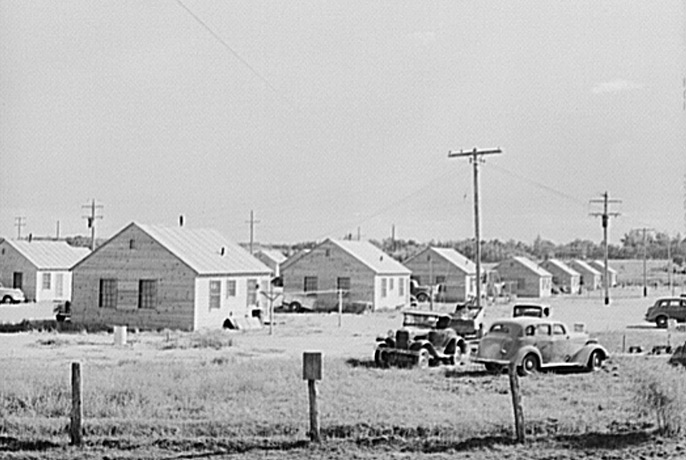
Housing was scarce in the early 1940s. Tertle Town, where Victory Square Park is now, was home to temporary housing for depot workers. (Photo: Library of Congress)

Not everyone who came to work in Hermiston had housing to live in. Russell Lee took this photograph of a depot worker who slept in his car. (Photo: Library of Congress)

Cabin court in Hermiston was built in two weeks for workers at the depot. Each unit of one room rented for eight dollars per week. (Photo: Library of Congress)
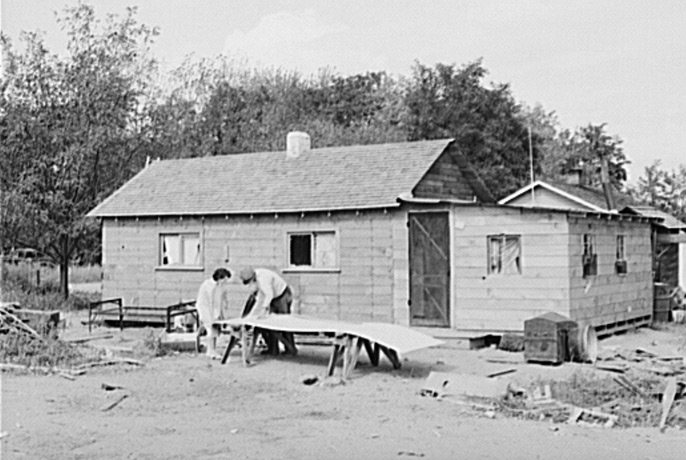
Some of the more industrious men took it upon themselves to build their own homes. Here a depot worker nears completion of his home. (Photo: Library of Congress)

In other instances, existing buildings were used for housing. Here a depot construction worker is shown in a converted wood shed used as shelter. (Photo: Library of Congress)

“All the modern amenities.” Here a depot worker installs plumbing in his house. In many instances, however, bathrooms were not included. (Photo: Library of Congress)

Bakeries, as well as other stores, were doing such a volume of business because of the "boom" that empty cartons and supplies were stored on the streets. (Photo: Library of Congress)
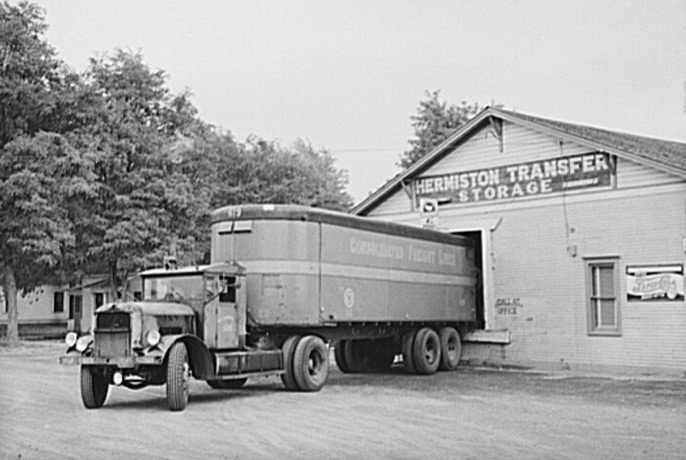
To keep up with the demand for goods, trucks were frequently seen bringing in new supplies to keep Hermiston store shelves stocked. (Photo: Library of Congress)

“No Vacancy” signs were commonplace in Hermiston in the early 1940s as construction at the army depot brought thousands into the town. (Photo: Library of Congress)
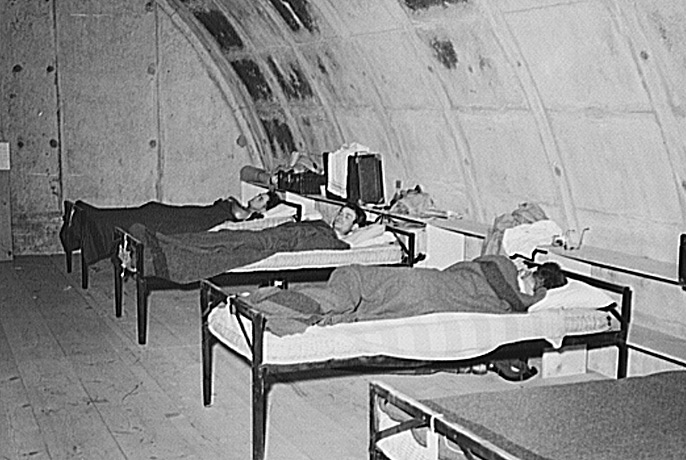
More signs of the housing crunch: More than a few workers out at the depot had to make do with sleeping in one of the igloos at the site. (Photo: Library of Congress)

The rimroad going south from the depot being prepared for oil surfacing. The depot had more than 200 miles of road built and 40 miles of railroad track. (Photo: Library of Congress)

Trailer camps began to pop up throughout Hermiston. When housing just wasn’t available, workers and families lived in trailers throughout town. (Photo: Library of Congress)

Those living in Cabin Court prepare for the winter weather by applying tar paper siding on their structures to help keep the wood dry. (Photo: Library of Congress)

Trailer camp with outdoor sanitary facilities. This is typical of camps where workmen at the depot and their families lived during the depot’s construction. (Photo: Library of Congress)

Tent of a workman and his family at the depot in Hermiston. Tents with a bedspring in them were rented out for two dollars a night. (Photo: Library of Congress)

Workmen at the depot were given a beer party by the contractor in celebration of pouring concrete for 24 igloos in 24 hours. (Photo: Library of Congress)

Students crowd the hallway in Hermiston in the early 1940s. School had to deal with the influx of new students brought on by depot construction jobs. (Photo: Library of Congress)

Russell Lee captured this image of a man coming out of the Hermiston Post Office with his arms loaded with packages. (Photo: Library of Congress)

A young girl cleans up inside one of the temporary housing units built for construction workers at the Umatilla Army Depot. (Photo: Library of Congress)

A school house in Hermiston around 1941. It didn’t take long for Hermiston to run out of room for all the new students. (Photo: Library of Congress)
A
The school board didn't have adequate transportation for all the children of workmen at depot and, consequently, many did not attend school. (Photo: Library of Congress)

There wasn't enough room for all the students in Hermiston, so many children ended up attending school in the basement of a church. (Photo: Library of Congress)

Eight hundred people got mail at this post office before the depot boom. During the boom, as many as 12,000 received mail in Hermiston. (Photo: Library of Congress)

When the defense boom started, the post office at Hermiston employed three people. It soon had a workforce of 16 to handle all the mail. (Photo: Library of Congress)

A worker at the Umatilla Army Depot in a converted woodshed he shares with another worker. Anything with a roof was used for housing at the time. (Photo: Library of Congress)












